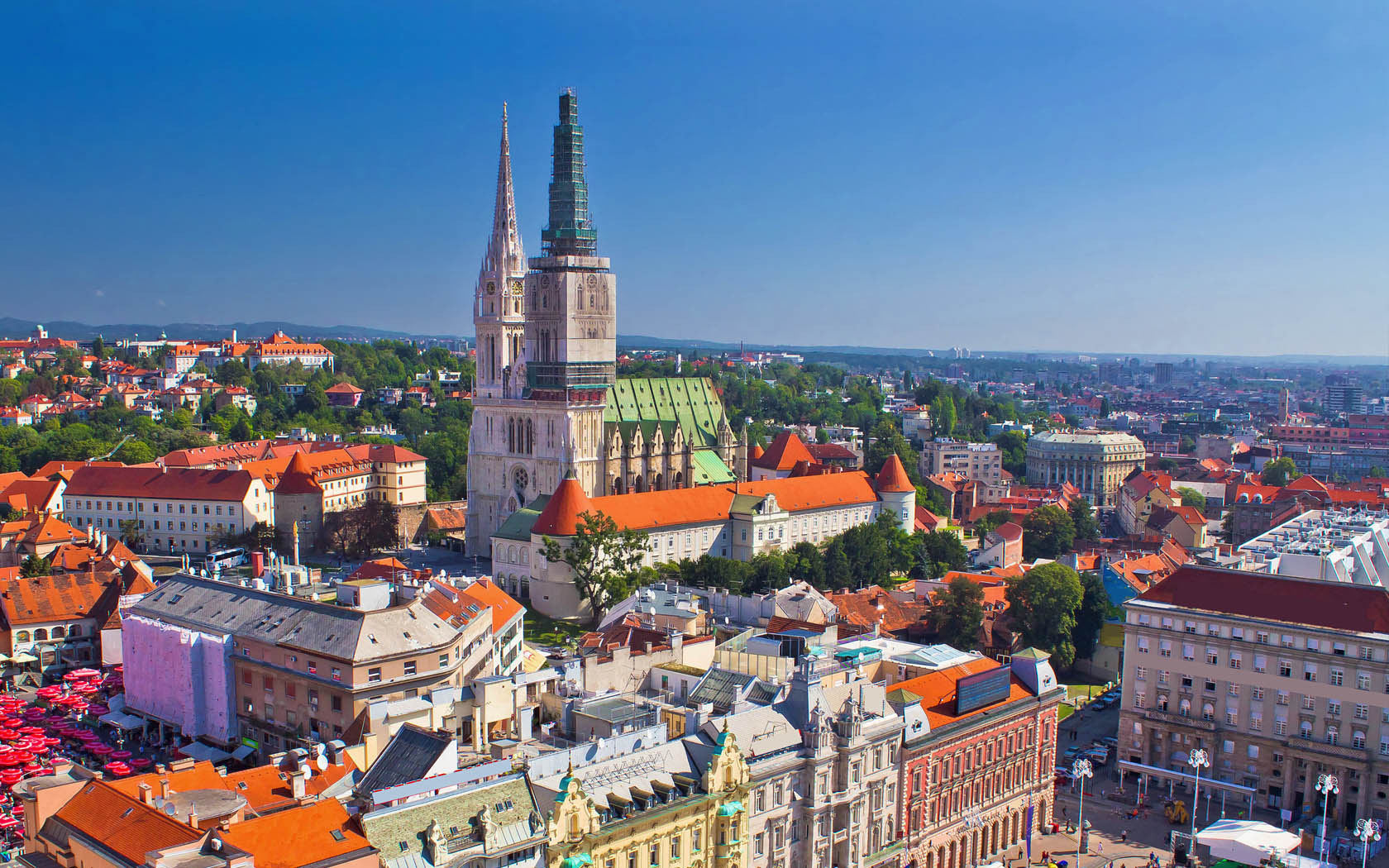- Home
- About Us
- Tel : +91 33 4022 9591
ZAGREBView all the popular packagesOffers
2 Popular Packege(s)
Zagreb is a mixture of straight-laced Austro-Hungarian architecture and rough-around-the-edges socialist structures, its character a sometimes uneasy combination of the two elements. This small metropolis is made for strolling the streets, drinking coffee in the permanently full cafes, popping into museums and galleries, and enjoying the theatres, concerts and cinema. Itâs a year-round outdoor city: in spring and summer everyone scurries to Jarun Lake in the southwest to swim or sail, or dance the night away at lakeside discos, while in winter Zagrebians go skiing at Mt Medvednica (only a tram/bus ride away).
Area 641 Square Kilometers
Population 0.79 Million
Winter Temperature 1 °C
Summer Temperature 22.0 °C
Best Time To Visit The summer months from June to October are the peak season to go Zagreb
Zagreb By Air

There are no flights from India going to Zagreb directly. Zagreb can be reached from India via Istanbul, Vienna or any similar European Carriers
Museum of Broken Relationships
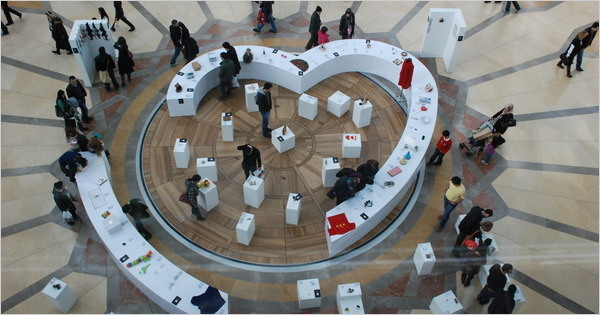
"We all have different ways of dealing with the mementos left behind when a love is lost. Unable to let go, some of us hide the barrettes he gave us before he left town to âfind himselfâ in a ornate box under the bed, while others burn photos taken of her before she was caught texting a âfriend.â The most mundane items in the world suddenly represent everything that might have been."
When Croatian artists Olinka Vistina and Drazen Grubisic separated, their reluctance to part with the sentimental reminders of their fizzled love inspired them to open the Museum of Broken Relationships, so that the items could remain together.
At first glance, this concept may seem to contradict healthy healing, but the idea took off, and while the museum was on tour, people from all over began to donate their reminders of heartbreak. Now the museum has a permanent home in Croatia, and contains a fascinating collection of former tokens of affection. Besides the anticipated teddy bears and letters, the collection also includes a few poignant and sometimes unsettling surprises -- a tiny bottle filled with a woman's tears, an axe and taser gun, and perhaps the strangest offering, a prosthetic leg.
As melancholy of a subject as it may seem, the museum is quite popular - be it voyeurism, purification, or just the acknowledgment that the lonely feeling of heart sickness is universal, over 1,000 people a week visit the collection. Due to this location's intense success, a second Museum of Broken Relationships opened in Los Angeles in 2016.
Zagreb Cathedral
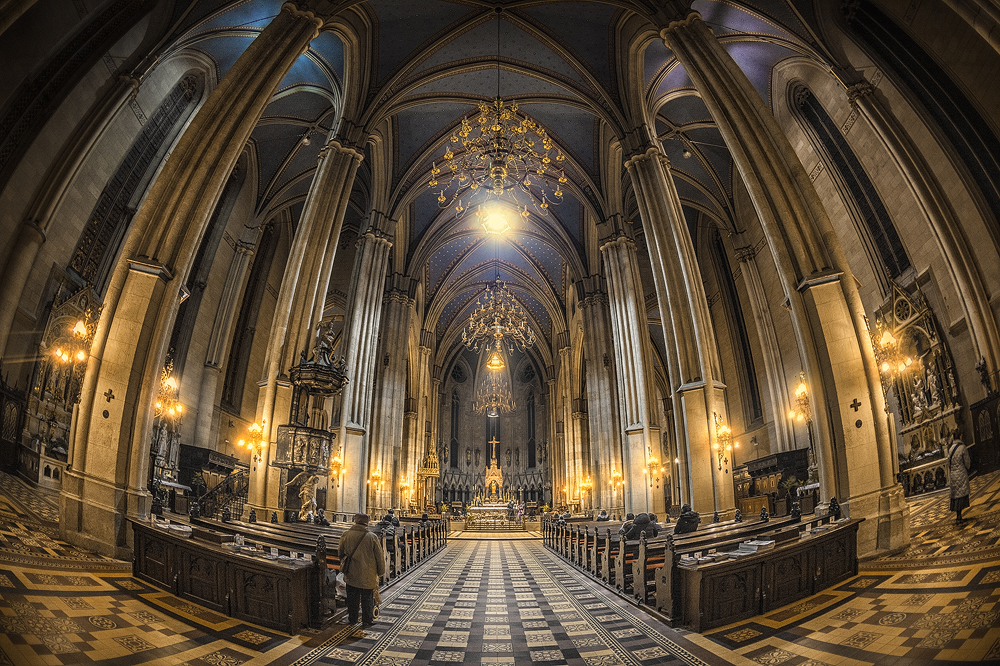
Zagreb Cathedral is the most stylish and most eloquent architectural realization church architecture of the Gothic style southeast of the Alps.
The Zagreb Cathedral is the most monumental and the most impressive Gothic-style sacral building southeast of the Alps. Its ground plan, with slender cross-ribbed arches within three polygonal apses with narrow windows, resembles French architectural pattern (ex. the one in Troyes); the details of its subsequently added naves (of equal height) correspond to the building patterns of modern German architecture; imaginative sculptures, on the other hand, reflect influence of Czech schools.
All this indicates not only early introducation of Gothic style to Croatia's north and internationalization of art, but also the importance of Zagreb Bishopric and the status and power of its bishops in those days. From the very beginning, the cathedral was dedicated to the Blessed Virgin mary, i.e. to the Assumption of the Blessed Virgin Mary (Feast of the Assumption). Although Hungarian King St. Stephen is always mentioned as the primary patron-saint, he is actually the second one.
Most likely, king Ladislaus (1040 - 1095) did not build a new cathedral after the founding of Zagreb Bishopric; instead, he proclaimed the existing one a cathedral.
Construction of the new cathedral began after his death. The cathedral was finished in 1217 and was consecrated by King Andrew II (1205 - 1235), on his way to the 5th Crusade. As early as in 1242, Tartars destroyed the newly built cathedral, so Bishop Stephen II (1225 - 1247) had the Chapel of St.Stephen the Martyr erected for the cathedral mass services. this Romanesque and Gothic building is today incorporated in the Archbishopric's Seat.
Bishop Timotej (1263 - 1287) started building a new, monumental cathedral, integrating in it the remainders of the 'preTartaric' cathedral. He dedicated it to St.Stephen, a Hungarian king. He managed to build the central apse and the two side ones with altars, as well as the sacristy. The frescoes in the sacristy (interestingly, St. Kvirin between St. Dominic and St. Francis) probably date back from the time of Bishop Augustin kažotić (1303 - 1322). Bishop Eberhard (1397 - 1406 and 1410 - 1419) deserves credit for the building of three church naves the evidence of which can be seen on his bishop's coat of arms on walls and pillars).
Bishop Osvald Thuz (1466 - 1499) roofed the whole building. Building of the steeple on the south side of the front started at that time; this renaissance and baroque steeple was not finished before the 17th century. Turkish threat forced bishop Thuz to start building fortifications around the cathedral. It was not before 1517 that they werw finished, by Ostrogon Archbishop Toma Bakač, the head of Zagreb Bishopric. He built a tower in front of the cathedral's entrance. It was named after him - the Bakač Tower. It was pulled down during the last reconstruction of the cathedral in 1906.
During the 17th century, fire damaged the cathedral several times, but every next reconstruction enriched its interior with valuable inventory. This includes baroque altars (wooden and marble ones) and a pulpit by sculptor Mihael Cusse (the latter one can still be seen in the central nave). Enriching of the cathedral's interior continued. Bishop Aleksandar Alagović (1829 - 1837) acquired the painting Assumption of Virgin Mary, that was installed on the altar, and a loft. Archbishop Juraj Haulik (1837 - 1869) removed the altar painting (he sold it to the parish church in Pregrada). Instead, he built the neogothic, main altar. Also, in 1855, he bought a large organ (with three manuals, one pedal and 53 registers), made by Walcker Company from Ludwigsburg.
The architecture of the organ-closet has neo-gothic features. Finally, Haulik had the shrine windows painted. Those are the oldest stained-glass windows in Croatia. In an attempt to restore the cathedral's original appearance, Viennese professor of Architecture Friedrich Schmidt was invited to Zagreb. He took his student Hermann Bolle with him. However, the cathedral was severely damaged by the disastrous earthquake of 1880. For this reason, not only it was reconstructed according to the design of H. Bolle, but its interior also acquired neo-gothic characteristics. That was especially clear/emphasized by the arches of the two neo-gothic bell towers(bells) , which hight is around 105m. Therefore the today's look of the Cathedral was finalized in 1902 year. In the past 30 years, substantial reconstruction works have been undertaken on the cathedral.
Since low-quality stone was used during Bolle's reconstruction (economic reasons and the vicinity of Bizek and Vrapče quarries), particularly on the new steeples and on the western facade, it soon started to deteriorate, affected by weather and city pollution (smog and chemical factors). The deterioration was first spoted on the cathedral's facade and on stone sculptures (ex.lanterns with pinnacles) that were now out of recognition. The first reconstruction of a part of the southern steeple started in 1938, but was stopped when communists came to power. It was reassumed in 1968, when the top of the northern steeple was renovated. Subsequently, mostly owing to donations from Croatian Diaspora, the worn-out roof was completely renovated and replaced with copper plates.
In 1987, Archbishop Franjo Kuharić founded the Zagreb Archbishopric's Committee for Reconstruction of the Cathedral, as well as a task force of selected experts. Soon, the Cathedral Reconstruction Monitoring Committee was also founded and scientific and art institutions and the city and state authorities took part in its activities. After architects and assessors of conservationist and restoration works had been selected, the reconstruction started in 1990. It has been going on ever since, by phases and priorities. The Committee publishes the periodical Our Cathedral, reporting on current status of the works.
Tortureum

The Museum of Torture â TORTUREUM offers an insight into its unique collection of various instruments of torture and execution that have been employed since the ancient times to the present day. The Museum vividly depicts the notion of violence throughout history, with over 70 full-scale instruments of torture, which even the thought of chilled people to the bone.
The visitors will be able to see, touch and try exhibits such as the full-scale replica of the 1792 guillotine with the 1889 Berger mechanism; pendulum â a swinging blade that descends lower and lower with each sweep; rack â one of the oldest instruments of torture; iron maiden, which is considered as the most brutal medieval instrument of torture; scoldâs bridle, an instrument used to punish women accused of scolding and gossiping, as well as many other instruments that were used to humiliate, torture, injure or execute the victim.
Inside the Tortureum, the visitor is immersed in a cabinet of wonders â a semidarkness in which the exhibits are bathing in discomforting sound environment. The specially designed multimedia guides with original audio and video content allow visitors to learn more about the history of each exhibited instrument of torture. The Museum is also unique for its Dungeon â a miniature cool room in which the visitor can spend a minute of his life in pitch blackness, anticipating the uncertain futureâ¦
The Zagreb Torturem was conceived as an experiential museum for every visitor as well as a reminder of the history of mankind in which violence arises from the fear of the unknown, different and from the fear of the Other. The Museumâs aim is also to help the visitor realize that our own increasingly vulnerable existence is daily subjected to various forms of visible andinvisible torture, from school bullying and workplace mobbing to domestic violence, in order to make torture eventually become just a part of human history presented in a museum.
Museum of Illusions
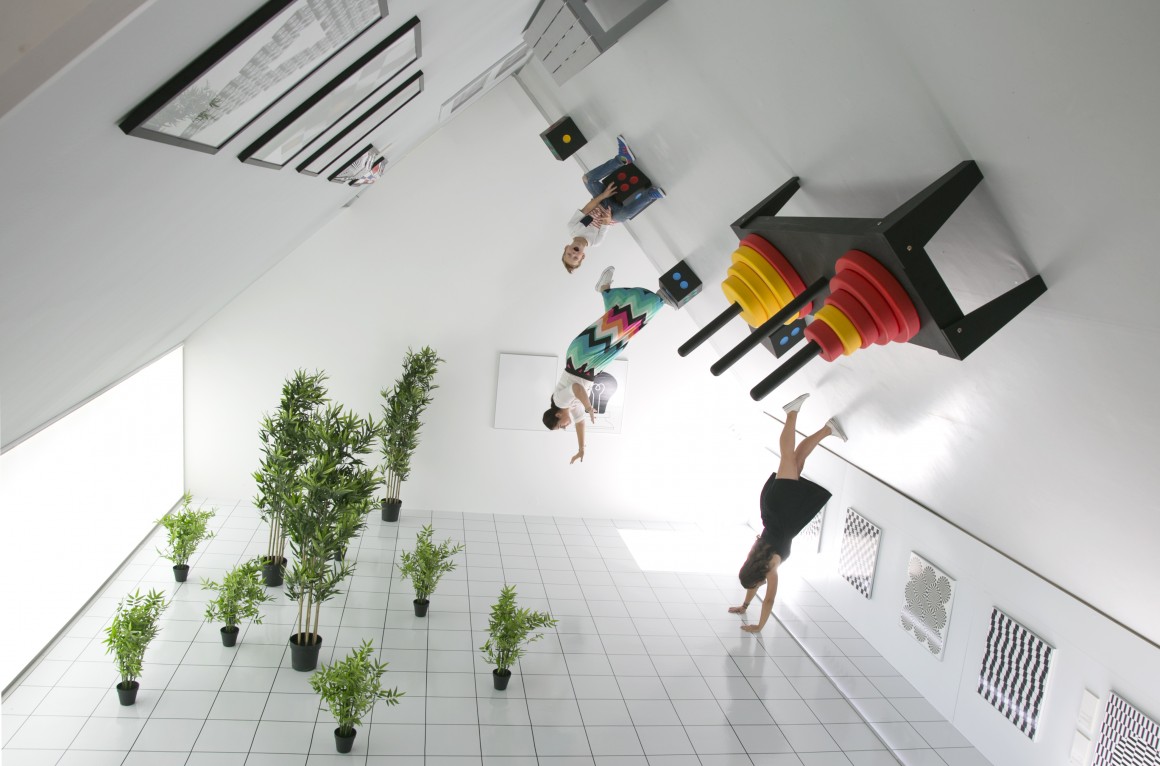
There is a new museum in town, the Museum of Illusions. With over 70 exhibits, it has the largest collection of holograms in this part of Europe, which will certainly not only thrill and confuse you, but will provide an opportunity to learn all sorts of things. Keep in mind that whatever you see is not what it appears to be.
The Museum of Illusions offers an intriguing, visual, sensual and educational experience in a fun adventure for all generations. Attractive and entertaining illusions will teach you about vision, perception, the human brain and science so you will be able to understand why your eyes see things that the brain does not understand.
Imagine defying gravity in a slanted room or the person you came with shrinking or growing before your very eyes, or a real bottomless pit, or serving somebody´s head on a tray and then taking a photo of it all in a boundless room.
There is also a clever playroom with lots of Dilemma games, which will absolutely blow your mind. The gift shop offers 3D lighting, games for all generations as well as souvenirs.
A bewildering and memorable experience you will never forget.
There is no need to imagine the impossible, just visit the Museum of Illusions.
SHOPPING IN ZAGREB

In Zagreb, shopping has undergone a makeover. From being a staid and rather quaint shopping backwater, the Croatian capital can now justifiably claim to be a hub of contemporary design. But for all these recent developments, Zagreb has not lost its traditional charm. The Dolac market behind the main square is still everyone's first port of call for fresh fruit and vegetables, and second-hand record stores abound. Read on to find out where to go shopping in Zagreb.
Croatian Design Superstore

Arguably the most talked-about opening of spring 2015, this long-awaited design store is pretty much everything the title suggests: a showroom-style display of the best contemporary Croatian-designed products. Stock ranges from the inexpensive and portable, such as the owl-shaped wooden coasters by Gloopy, to more pricey and unwieldy items of furniture like Fluffy-Hairy by Numen/For Use: a sofa so unusual that it will redefine your entire flat. In between, there are plenty of T-shirts, childrenâs toys, domestic items and even designer olive oils. Pretty much everything here is imaginative, practical and well made, making it the perfect place for quirky but quality souvenirs.
I-GLE
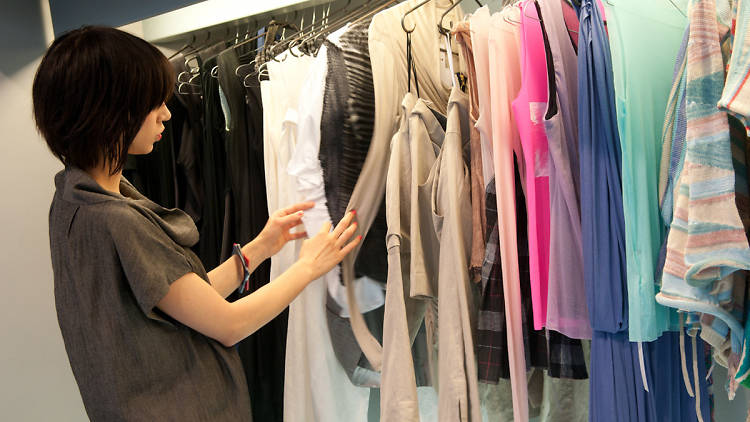
The flagship store of local designers Martina Vrdoljak Ranilović and NataÅ¡a MihaljčiÅ¡in offers striking designs for women and custom ones for men. Their looks represent Croatia's evolution from looking to more comfortable. Their fashions combine relaxed functionality and elegance with evocative colour combinations. The I-GLE label enjoys cult status in Zagreb, where they have made clothes for several theatre productions, and have gained a foothold at designer stores in the UK and Hong Kong.
Croata
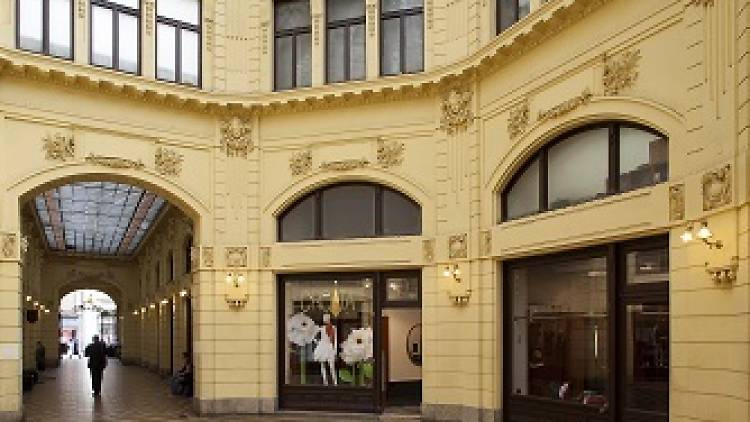
Croatia is widely regarded as the original home of the necktie, and this smart store in the Oktogon arcade (just west of the main square) is a successful attempt to turn this heritage into contemporary style. Many know the story of how the necktie was born: while fighting alongside their Croat allies in the 17th century, the French were struck by the Croatian soldiers' scarves. The look became fashionable and the French named the accessory the cravat (the Français-isation of the word Hrvat, or Croat). Croata plays this story hard and has blossomed into Croatia's tie-selling leader with shops all over the country. This location is beautiful with marble and wooden inlay floors, dark wooden display cases and everything awash in manly brass. Besides silk ties â ranging in price from 249kn to 2,000kn, some with Croatian Glagolithic letters and patterns absorbed from local traditions â shelves are stocked with wallets, shoes by Lloyd of Germany, belts, tie clasps, briefcases, fountain pens, tuxedoes, and women's accessories like scarves, handbags, gloves and belts.
ROBA
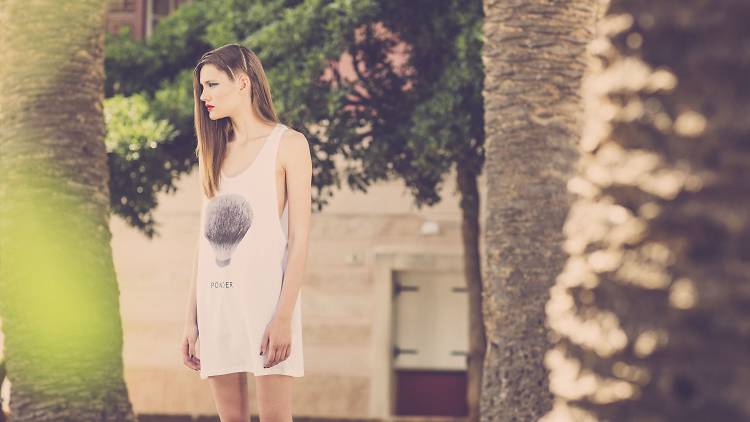
Selected by Italian 'Vanity Fair' in March 2011 as one of their top ten new design talents to watch, Roba was founded by Branka Å ćepanović and Maja Å imunović in 2007, quickly developing a reputation for elegant but sensual items fashioned from soft supple leather. Roba's garments artfully bridge the gap between high fashion and edgy, almost fetishy clubwear, the labels inside the collar carrying ambiguous messages such as 'This deluxe piece of clothing is a humble answer to the mysteries of mankind'. Robaâs superbly tailored and highly individual leather jackets start at around 3,000kn. Also feast your eyes on Roba's plisse leather tops, and stunning leather dresses. Bags and rucksacks by LongWayBack, and sunglasses by Sheriff&Cherry are in stock too.
Restaurants in Zagreb
These are the list of Indian Restaurants in Zagreb:
1. Royal India Restoran
2. Indijski restoran Maharadja
3. Curry Bowl
4. Klub SuperSoul

